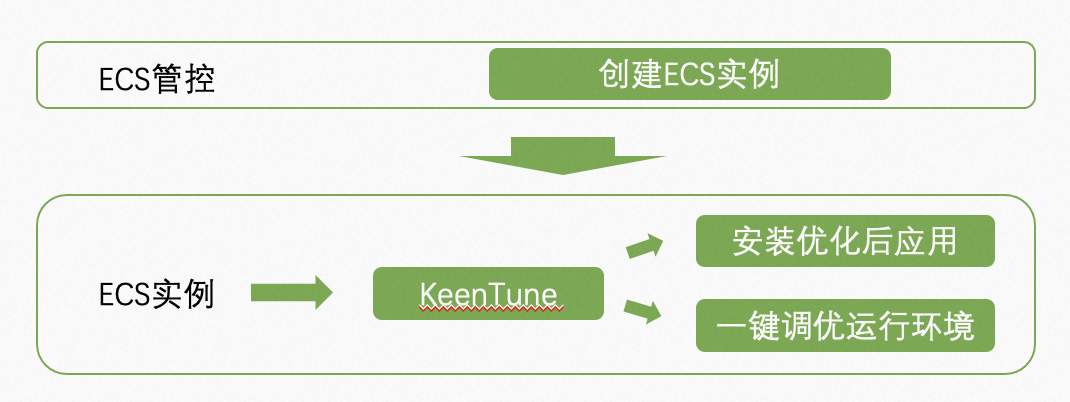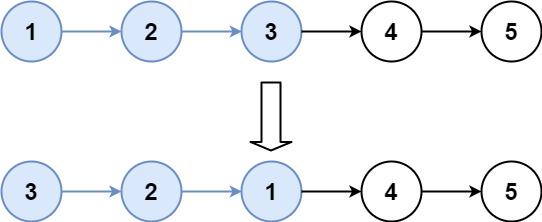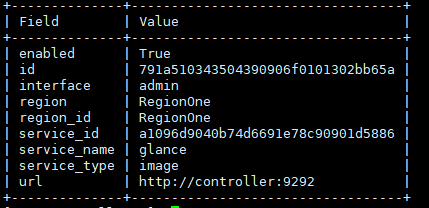A~D比较简单就不写了,哎嘿
E. Negatives and Positives
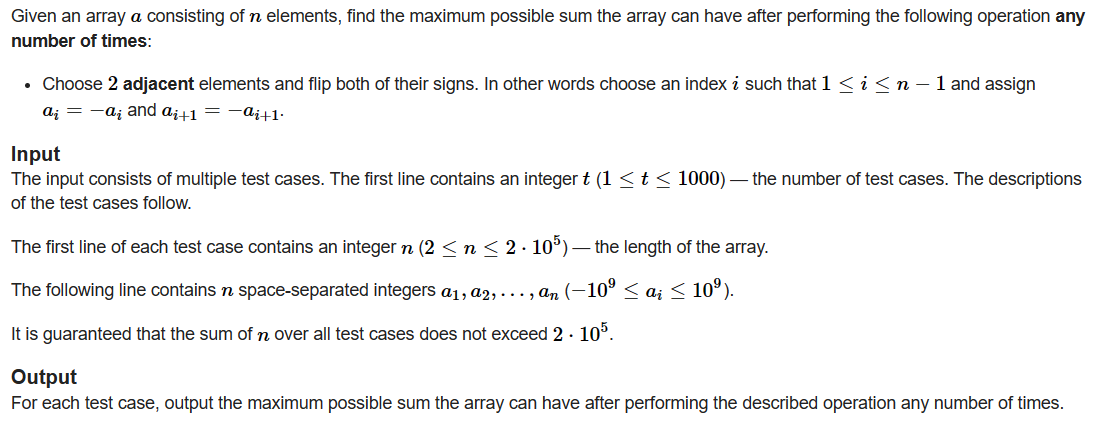
给出一个数组a,可以对数组进行若干次操作,每次操作可以将相邻的两个数换为它们的相反数,求进行若干次操作之后能得到数组和的最大值是多少。
思路:最大的肯定是把负数都变成正数吧,从这里开始考虑,对于两个相邻的数为--的,可以进行一次操作让它们变为++;对于类似-+-这样的,可以进行若干次操作使得所有的数都变为正数:-+- -> +-- -> +++。所以对于数组中负数个数为偶数的,所有的负数都可以被变成正数;对于负数个数为奇数的,若要得到最大的值,应当保留绝对值最小的那个数为负值。
AC Code:
#include <bits/stdc++.h>
typedef long long ll;
const int N = 2e5 + 5;
int t, n;
ll a[N];
int main() {
std::ios::sync_with_stdio(false);
std::cin.tie(0);
std::cout.tie(0);
std::cin >> t;
while(t --) {
std::cin >> n;
ll cnt = 0, min = 2e9;
for(int i = 1; i <= n; i ++) {
std::cin >> a[i];
min = std::min(min, abs(a[i]));
if(a[i] < 0) cnt ++;
}
ll sum = 0;
for(int i = 1; i <= n; i ++) {
sum += abs(a[i]);
}
if(cnt & 1)
sum -= 2 * min;
std::cout << sum << '\n';
}
return 0;
}F. Range Update Point Query
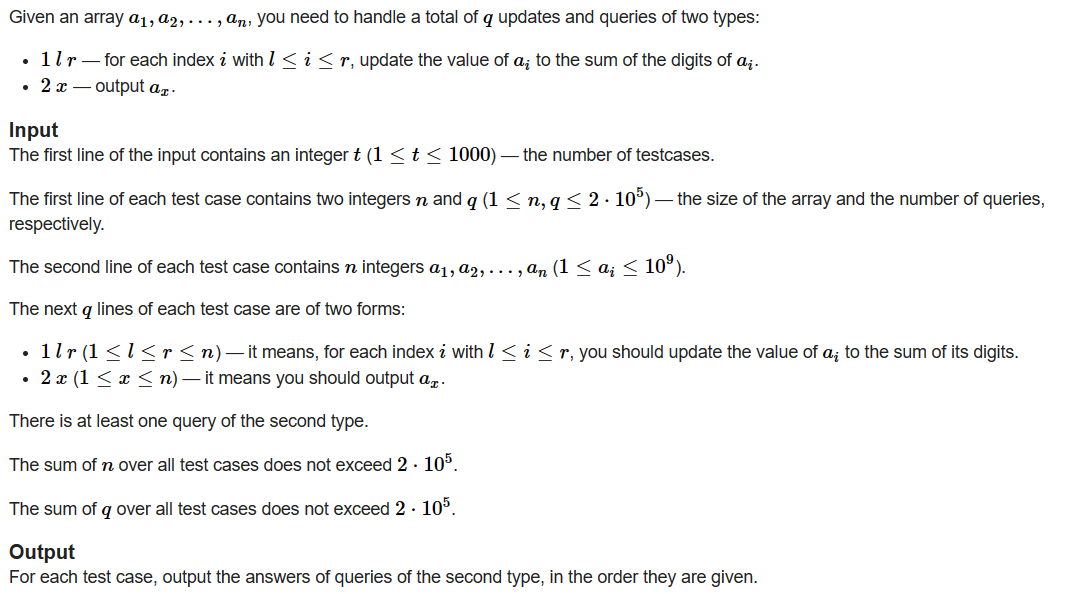
给出一个序列a,有两种操作,一个是对于区间[l, r]内的数进行如下操作:将数替换为所有位的数字之和;一个是给出x,输出位于x的数。
思路:树状数组裸题练习。用树状数组维护前缀和,每次进行操作就在区间内+1,看数据范围,范围内最大的数经过3次操作后也会变成一位,后面就不变了,所以显而易见,我们维护的前缀和的含义是修改次数,输出结果的时候加入判断即可。
AC Code:
#include <bits/stdc++.h>
typedef long long ll;
const int N = 2e5 + 5;
int t, n, q;
int c[N], a[N];
int lowbit(int x) {
return x & -x;
}
void update(int pos, int x) {
for(; pos <= n; pos += lowbit(pos)) {
a[pos] += x;
}
}
int query(int x) {
int tot = 0;
for(; x > 0; x -= lowbit(x)) {
tot += a[x];
}
return tot;
}
int getnum(int x) {
int num = 0;
while(x) {
num += (x % 10);
x /= 10;
}
return num;
}
int main() {
std::ios::sync_with_stdio(false);
std::cin.tie(0);
std::cout.tie(0);
std::cin >> t;
while(t --) {
std::cin >> n >> q;
for(int i = 1; i <= n; i ++) {
std::cin >> c[i];
}
for(int i = 0; i <= n + 1; i ++) {
a[i] = 0;
}
while(q --) {
int op;
std::cin >> op;
if(op == 1) {
int l, r;
std::cin >> l >> r;
update(l, 1);
update(r + 1, -1);
}
else {
int x;
std::cin >> x;
if(c[x] < 10)
std::cout << c[x] << '\n';
else {
int cnt = query(x);
cnt = std::min(3, cnt);
int num = c[x];
while(cnt --) {
num = getnum(num);
}
std::cout << num << '\n';
}
}
}
}
return 0;
}G1. Teleporters (Easy Version)
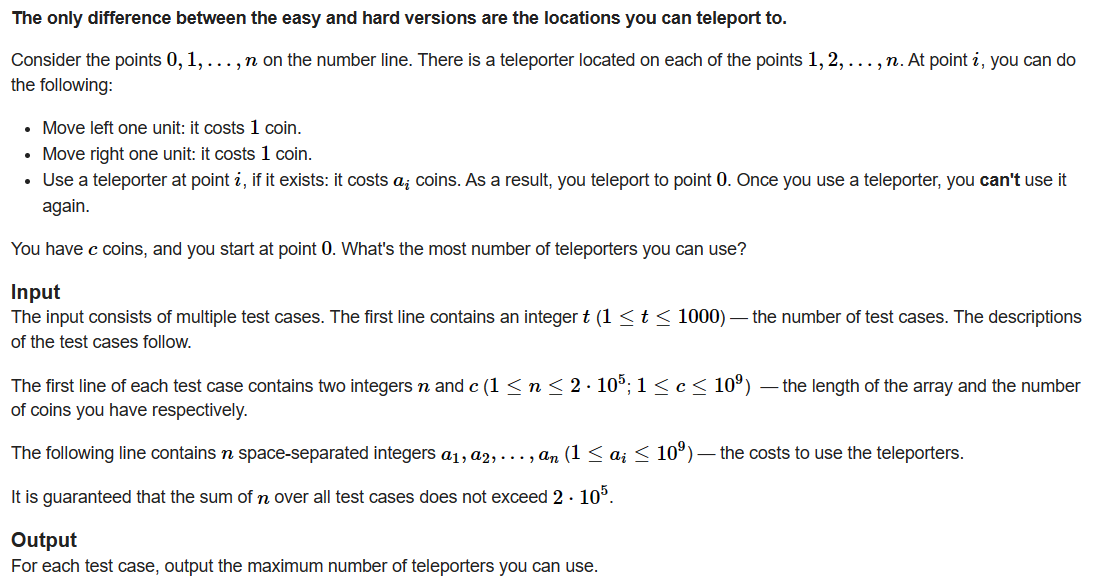
给出一个有0~n个点的数轴,1~n每个点有一个传送门,每走一步会消耗一个金币,走传送门也有相应的消耗a[i],每个传送门只能走一次,传送门会传送到0点,问最多可以走几个传送门。
思路:每个传送门的消耗是到达步数+传送门消耗,排序,贪心求解即可。
AC Code:
#include <bits/stdc++.h>
typedef long long ll;
const int N = 2e5 + 5;
int t, n, c;
ll a[N];
int main() {
std::ios::sync_with_stdio(false);
std::cin.tie(0);
std::cout.tie(0);
std::cin >> t;
while(t --) {
std::cin >> n >> c;
int cnt = 0;
std::vector<int> vec;
for(int i = 1; i <= n; i ++) {
std::cin >> a[i];
vec.push_back(i + a[i]);
}
std::sort(vec.begin(), vec.end());
for(int i = 0; i < (int) vec.size(); i ++) {
if(vec[i] <= c)
cnt ++, c -= vec[i];
}
std::cout << cnt << '\n';
}
return 0;
}G2. Teleporters (Hard Version)

给出一个有0~n个点的数轴,1~n每个点有一个传送门,每走一步会消耗一个金币,走传送门也有相应的消耗a[i],每个传送门只能走一次,传送门会传送到0点或n+1点,问最多可以走几个传送门。
思路:因为现在位于点0,所以对于从那个点开始,需要我们讨论。然后,对于其他点,我们可以选择从两侧哪一侧到达,可以枚举起点,对于其他点采用前缀和维护消费,二分查找答案,具体细节看代码。
AC Code:
#include <bits/stdc++.h>
typedef long long ll;
const int N = 2e5 + 5;
int t, n, c;
ll b[N];
std::pair<ll, ll> a[N];
int main() {
std::ios::sync_with_stdio(false);
std::cin.tie(0);
std::cout.tie(0);
std::cin >> t;
while(t --) {
std::cin >> n >> c;
ll ans = 0;
for(int i = 0; i < n; i ++) {
int m;
std::cin >> m;
a[i].first = std::min(m + i + 1, m + n - i);
a[i].second = m + i + 1;
}
std::sort(a, a + n);
for(int i = 0; i < n; i ++) {
b[i + 1] = b[i] + a[i].first;
}
for(int i = 0; i < n; i ++) {
if(a[i].second <= c) {
int l = 0, r = n;
while(l < r) {
int mid = (l + r + 1) >> 1;
ll sum = b[mid];
if(mid > i)
sum -= a[i].first;
if(a[i].second + sum <= c)
l = mid;
else
r = mid - 1;
}
ans = std::max(ans, (ll)l + 1 - (l > i));
}
}
std::cout << ans << '\n';
}
return 0;
}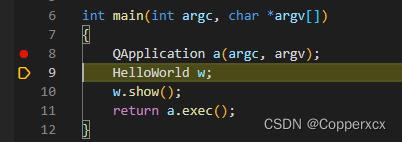

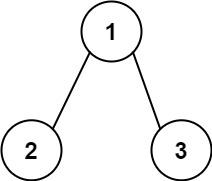
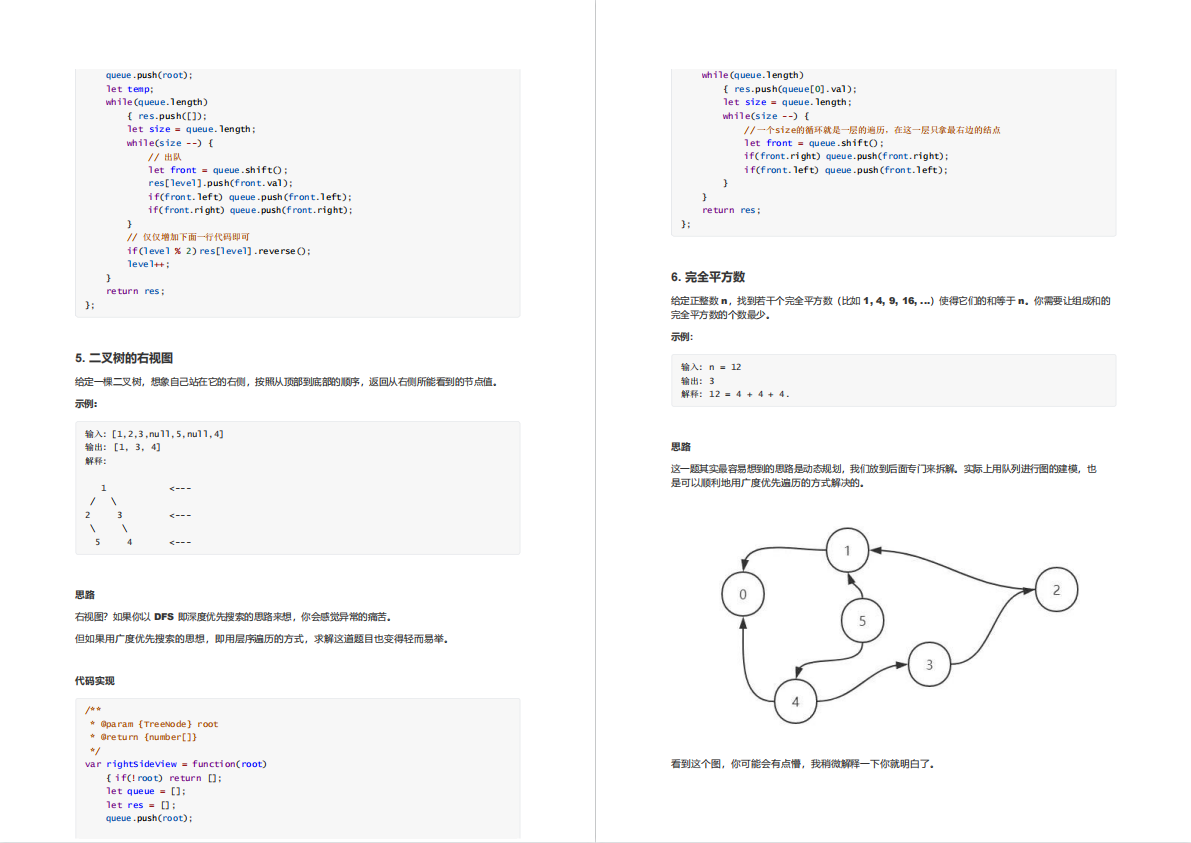
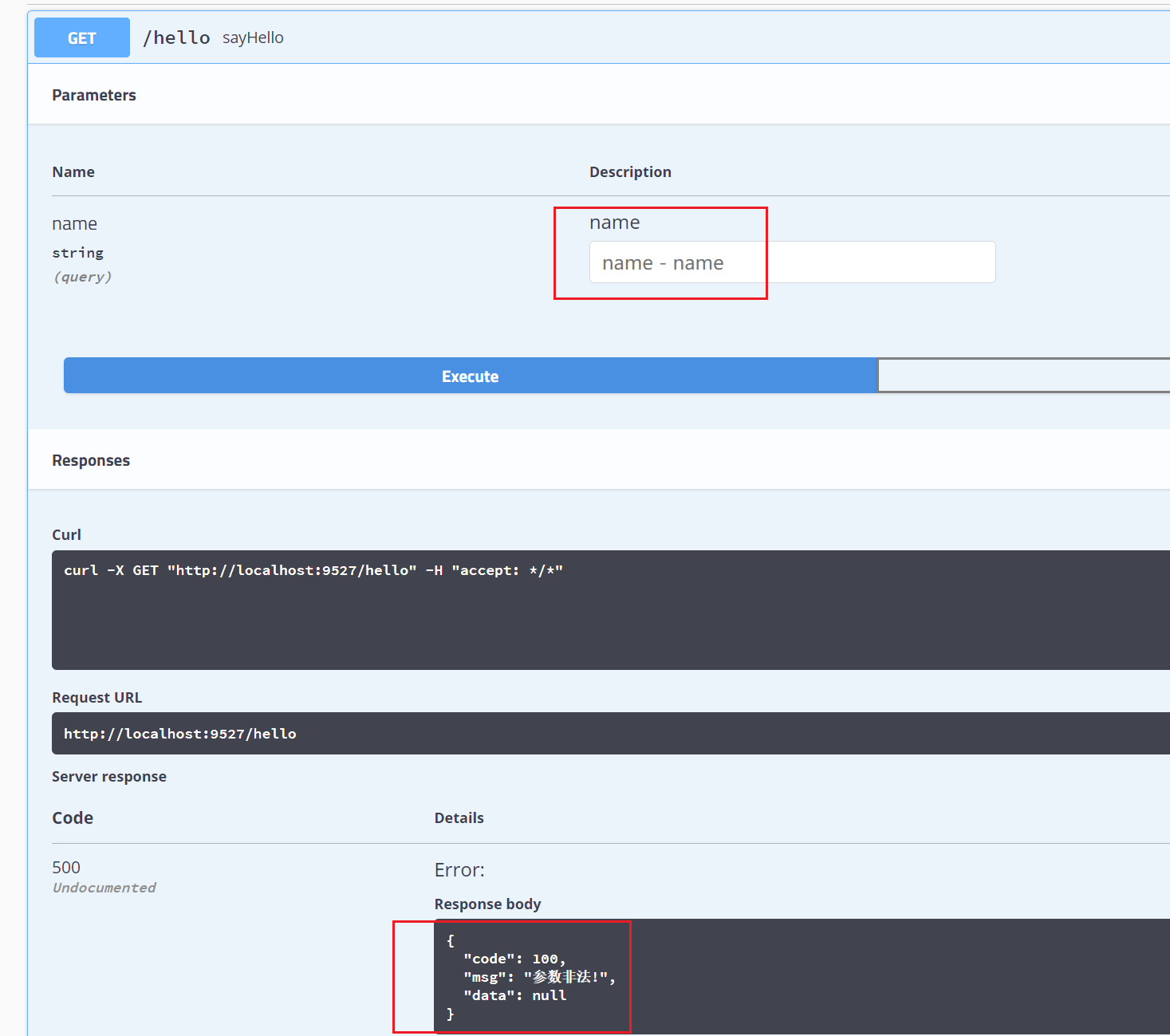




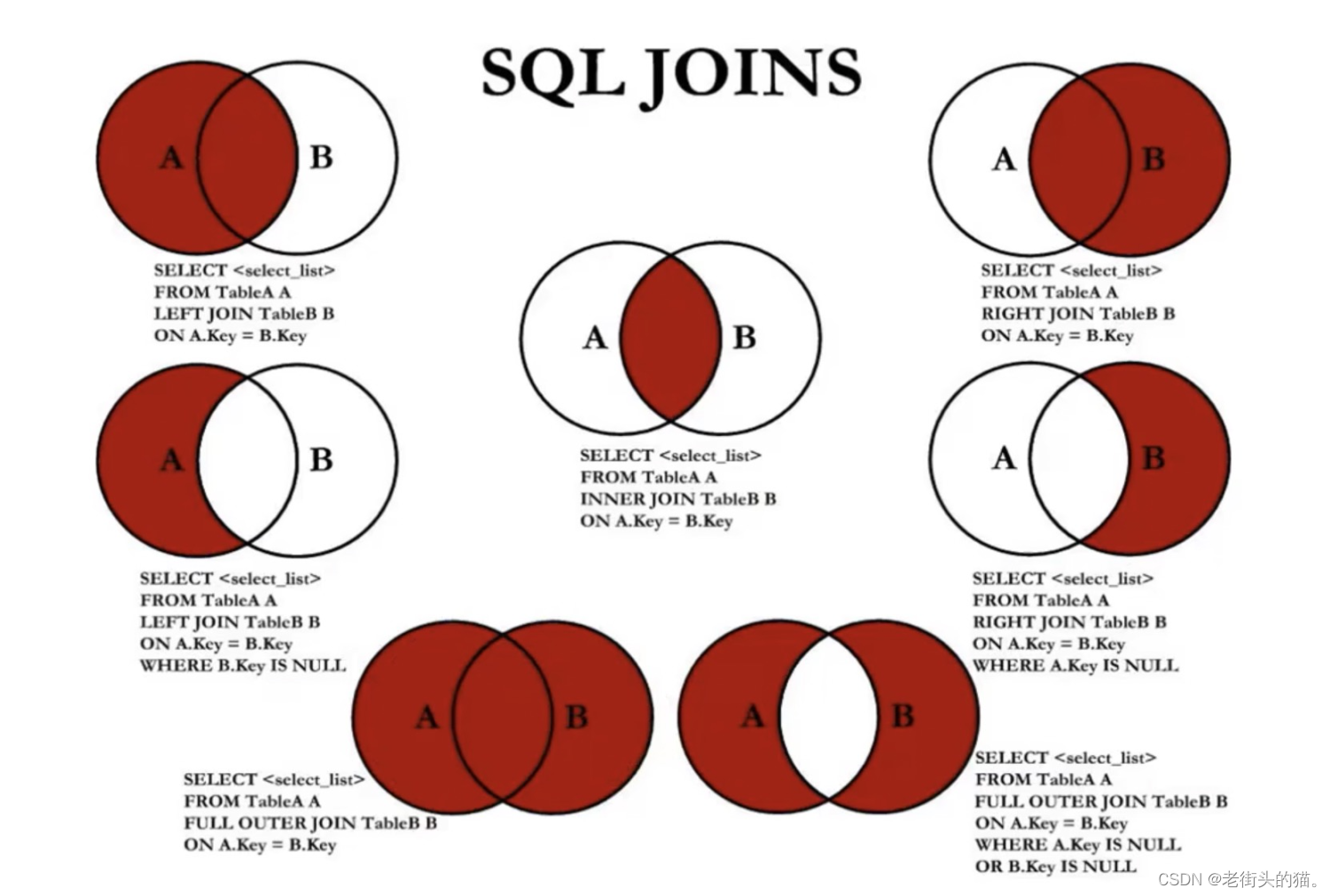



![[python入门(51)] - python时间日期格式time和datetime](https://img-blog.csdnimg.cn/df610f8954064a3ba9a8ebace394bfed.png)
